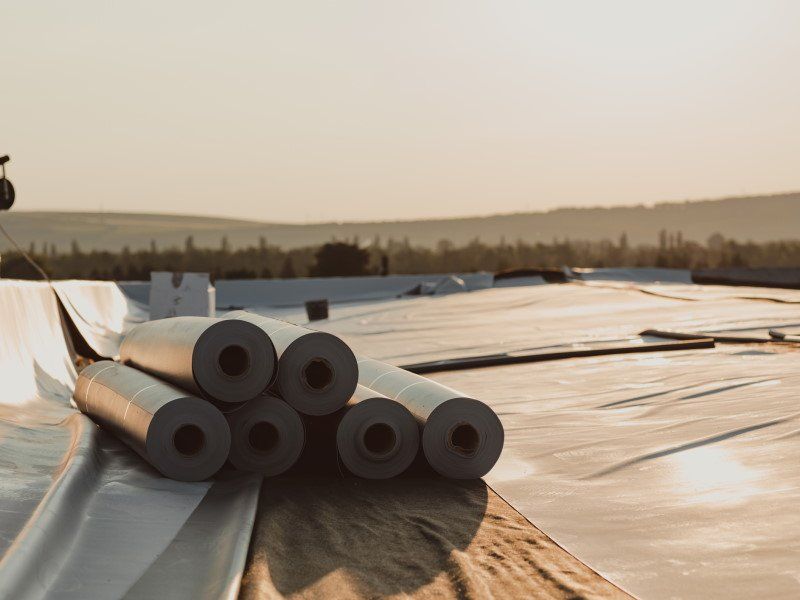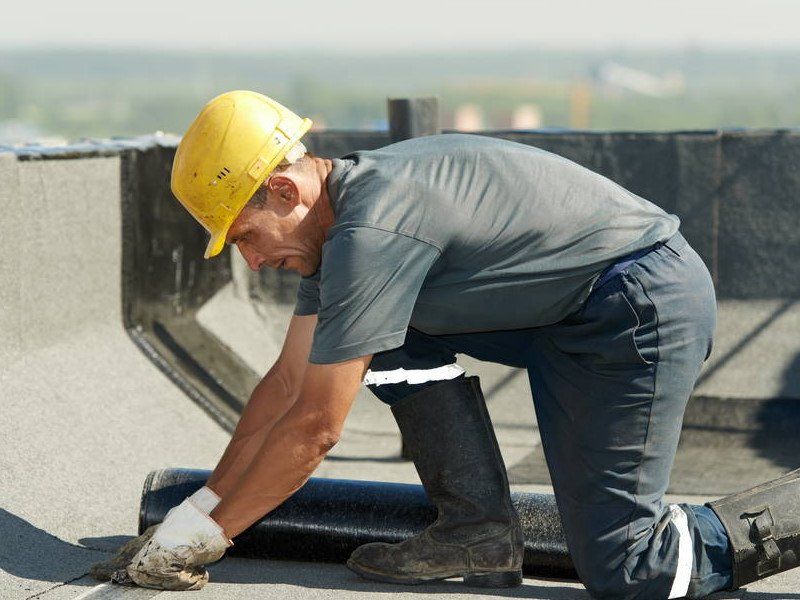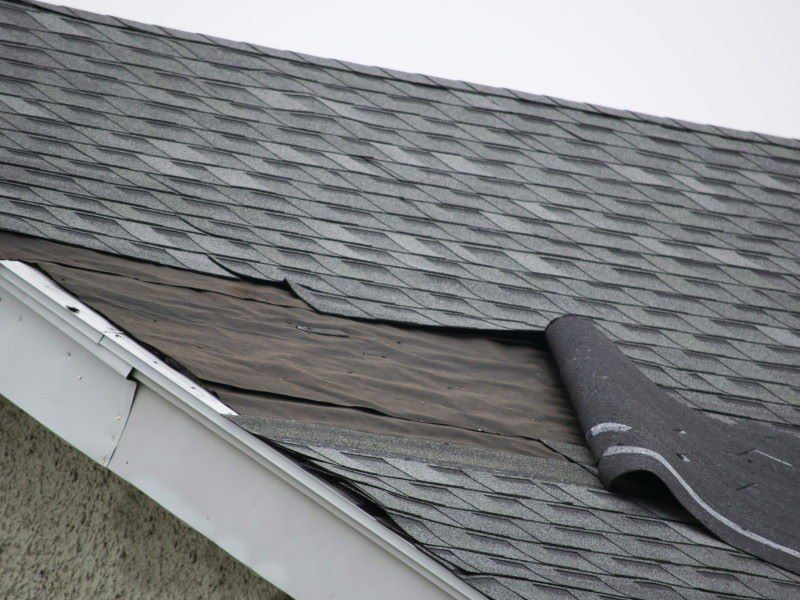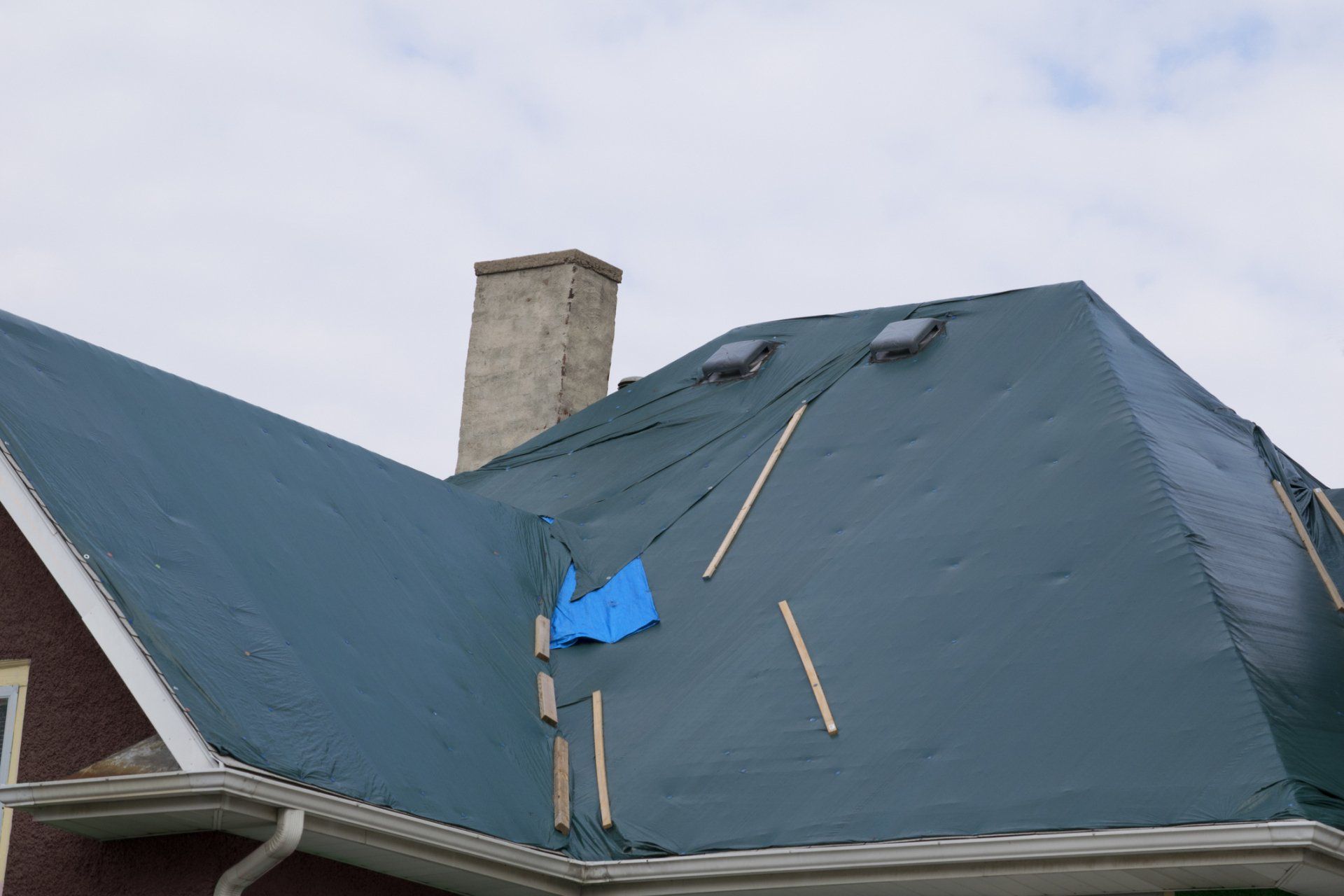What is roof tarping?
Things to consider before choosing a tarp for your roof:
What is your situation? If you have a large hole in the roof, it might be best to get an emergency tarp that covers the entire area. However, if just one or two shingles are missing, then you can probably cover them without too much of a problem.
- The damage - whether it is just a leak, missing shingles, or worse - will determine the type of tarp you should choose.
- How soon do you need to do this? If you have an upcoming storm coming through your town and will be without a working roof for weeks because of weather damage then having a tarp that covers just part of the home might not work
- How long do you need the tarp to hold up for? For example, if there's going to be heavy winds in less than 48 hours and you're worried about how much longer the existing shingles will last then a tarp with a shorter life span is probably not going to work.
- The size of the area you need to be covered; If you have a large home, it might be best to get an extreme tarp that covers the entire roof. However, if the damage is just on one or two shingles then you can probably cover them with something smaller.
- The type of tarp you need. Different kinds are designed to protect the roof from different things so it's important not only to consider what kind of damage your roof has but also how much protection do you need? Some roofs just have a few leaks and all that is needed is something to keep water out until an actual contractor can make a permanent fix.
- Temporary vs. long-term protection; If you're going to use a tarp for several weeks, it might be best to get one that has a longer life span. However, if the damage is just minor and will only need protection from water or weather for less than 48 hours then something with shorter life spans would probably work better.
Best Waterproof Tarp Materials
There are many different emergency roof tarps that you can use to fix your roof. Some emergency roof tarps will be much better suited to certain situations than others, so it is important to understand the different types and how they may help or hurt in various emergency roof repair scenarios.
Here are
three types of emergency roof tarps that you might want to consider.
Vinyl Coated Polyester Tarps
This is a lightweight tarp that can be used to cover small areas of the roof. It is best for preventing leaks and protecting from weather damage, but it will not work as well in heavy winds or other extreme situations with harsh weather conditions.
Vinyl Laminated Polyester Tarps
This is a medium-weight tarp that can be used to cover areas of the roof. It works well in most weather conditions but will not work as well for small repairs or leaks.
Iron Horse Polyester Waterproof Tarps
This is one of the heaviest emergency tarps you can get and it's best suited for protection from heavy weather. This is the most commonly used tarp for roof repair when a storm or other bad weather conditions are coming through town.

When to Tarp a Roof?
Roof emergency tarps are typically used in emergency roof repair situations where there is a temporary need to cover an area of your roof that has suffered some sort of damage. For Example, emergency roof tarps may be used to fix emergency leaks, emergency wind damage, emergency hail damage, or emergency fire damage.
Emergency Wind Damage
A roof emergency tarp can be put in place to cover an area of your roof that has suffered emergency wind damage. This will help protect the area from any further damage that might occur during the storm. It can also provide emergency protection from the rain.
Emergency Hail Damage
Hail can do a lot of damage to your roof, whether the wind has ripped off some of the shingles or there are areas where hailstones have punched holes in your roofing material. A roof emergency tarp will help protect such an area from water intrusion and further emergency damage. It may also provide emergency protection against more emergency hail damage.
Emergency Fire Damage
Is emergency fire damage to your roof an emergency concern? If so, you will need emergency tarping. You cannot simply cover the affected area with plywood or OSB because it is not waterproof. But if there are emergency leaks under this damaged section of your roof following a fire, putting out tarps on top of the leaky emergency roof may only make emergency matters worse.
Fallen Tree Branches
A roof emergency tarp is also great for emergencies where tree branches have fallen on your emergency roof and damaged it. It can provide emergency protection from the elements such as rain, snow, ice, etc., while you get an emergency repair company out to handle the problem permanently.
Benefits of roof tarping
There are many benefits of roof tarping. First, you can use tarps for temporary protection from the rain or other weather conditions that may cause water to get into your emergency house through broken windows or holes in the shingles. It can also provide temporary protection from the wind and hail damage on your roof. Another benefit of using a tarp is that it will help keep debris such as leaves, twigs, branches, or other types of shingle pieces out of your home while you make repairs to the emergency problem areas of your roofing material.
Installing a tarp on your roof emergency
Roof emergency tarps are typically attached to the roof with rope. This is because it's difficult for most homeowners to climb up onto their roofs and attach a tarp from above-using nails or screws, which can make matters worse if there is already damage on your roof. You should always get professional help when installing any type of repair tarp on your roof to avoid further damage.
Cost to get a roof tarped
The cost of installing your repair tarps will depend on how large or small the area is that needs covering and whether this type of material is already on your roof.
The cost of installing tarps can vary, but it is typically less expensive than other types of permanent repair materials such as metal or rubber. It's also easier to install because you do not have to go up onto the roof yourself and secure anything with nails or screws-rope will usually suffice for tarp installation.

FAQs
What are the best materials for tarps and how long do they last before needing replacement?
The best materials for tarps are vinyl-coated polyester, iron horse waterproof fabric. Vinyl will last a long time before needing replacing while the polyester material is expected to last double the time of vinyl.
How long will the process take from start to finish?
The repair process is quick and easy. The tarps themselves are lightweight, which means that once the right size tarp has been selected for your emergency roofing need; you can get them up on your roof quickly and easily. You may even be able to complete the entire process in less than an hour if you have everything that is needed for roof installation on hand at home before beginning work on your emergency roofing project.
Will, there be any disruption in services while this is being done on my house/business building?
It depends on the extent of emergency roof damage and how extensive emergency roof repairs are. If repairs are simple, emergency roof tarps can be put in place to protect emergency areas of your emergency roof very quickly. But if emergency roof repairs are extensive, emergency tarping your emergency roof can be a much longer process, and it may take several days to complete.
How long does Tarping a roof last?
When emergency roof tarps are used, it is important to realize that they will not last forever. They may be able to stand up for a few days at the most - making emergency roof repair necessary if you want something more long-lasting.
What is the longest-lasting tarp material?
Tarps are meant to be used as temporary emergency roofing measures. However, they do have a limited lifespan before needing roof replacement which is why it's important to ensure that you are using the highest quality tarp material available for your particular need and work area because this will be able to withstand more exposure over time than low-quality tarps.
Does tarping damage your roof?
Tarps are only used to prevent damage from occurring in the first place. They do not harm roofs, and they offer further protection. However, if your roof already has extensive emergency roof damages that require covering over with tarps because they are unsafe to be left open to the elements such as heavy rain or high winds-this can add additional strain to the underlying material causing further damage.
Does insurance cover roof tarping?
Some insurance providers may cover tarping your emergency roof if you have a temporary tarp or are putting up tarps on an already damaged surface. However, some providers will not pay for this type of project because it is considered to be preventative maintenance-and they only reimburse the cost of repairing existing damages caused by weather elements such as heavy snow, wind, and rain.
How do I stop my roof from leaking in the rain?
The best way to stop your roof from leaking in the rain is by taking care of your roof and keeping it well maintained. The more quickly you address issues like missing shingles, broken tiles, or other damages that can occur as a result of exposure to weather elements such as heavy rains-the better off you will be because this means you will be able to prevent larger problems from developing and costing you more money.
Can emergency tarping be done in all weather conditions?
Yes. It is possible to work on emergency tarping your roof in all weather conditions, and this will depend on what the need for temporary shelter is. For example, if your roof has extensive damage that cannot be left open to the elements because of heavy rains or high winds-it may be necessary for you to complete repairs as quickly as possible to ensure that the structure of your roof is protected.
What are some hazards of tarping a roof?
If you try and work on emergency tarping your roof when it's too windy or rainy-it may be more difficult for you because heavy winds can make securing tarps very time-consuming, bulky, and difficult to manage. Working in wet conditions can also make it more difficult because you need tarps that can stand up against moisture and the damage it may cause over time-which is why choosing high-quality tarping materials will be important for your specific project needs if you want something weather resistant.
Can I do emergency tarping myself?
While you can add temporary emergency roof tarps yourself-you may want to consider hiring a professional contractor who is experienced with the process if your roof has extensive damage or requires covering over because of heavy rains or high winds. This will speed up the project and ensure that it's done correctly.
Call Southern Roofing Systems today for emergency roof tarping and roof repair
There are many benefits to using a roof tarp for temporary protection from the elements. However, there are some risks such as the material used in your tarp not being able to withstand heavy rain or high winds. This could result in added stress on your roofing system and cause further damage over time which is why you must choose a contractor with experience when completing this type of project so they can ensure everything is done correctly.
If you need emergency roof tarping or assistance with any other type of roof repair,
call the professionals at
Southern Roofing Systems today. We are experienced with every aspect of roofing and are ready to help you resolve any issues you may be having.





![What Is Torch Down Roofing? [Benefits and Downsides]](https://lirp.cdn-website.com/d89ea654/dms3rep/multi/opt/iStock-1092069734-6690c8ea-1920w.jpg)

![How to Remove Moss from Your Roof [The Ultimate Guide]](https://lirp.cdn-website.com/d89ea654/dms3rep/multi/opt/older+roof+in+need+of+roof+repair+in+Orange+Beach-1920w.JPEG)

